In the world of fitness, focus is just as important as physical strength. Live Evolved recognizes this synergistic relationship between strength and concentration and presents Phasic, a high-stim pre-workout supplement designed to energize your body and prime your mental awareness at the same time.
Phasic utilizes the cognitive enhancing properties of Nutrition21's nooLVL, aiming to provide the clarity needed to power through intense workouts.
We've covered nooLVL here at PricePlow extensively as a nootropic ingredient -- it was originally designed to help gamers lock in during intense sessions, with research-backed improvements to short term memory and reaction time. Having such a winning formula, Nutrition21 decided to focus on nooLVL's support for brain health, wisely deciding that the ingredient was for far more than just gaming supplements.
So how does Live Evolved take advantage of this in a pre-workout? Before we find out, be sure you're subscribed to PricePlow for some of the best supplement deals, news, reviews, and interviews out there!
Live Evolved Phasic – Deals and Price Drop Alerts
Get Price Alerts
No spam, no scams.
Disclosure: PricePlow relies on pricing from stores with which we have a business relationship. We work hard to keep pricing current, but you may find a better offer.
Posts are sponsored in part by the retailers and/or brands listed on this page.
This area is reserved for Team PricePlow's upcoming videos.
Subscribe to our channel and sign up for notifications so you catch it when it goes live!
Using nitric oxide production as a nootropic?!
In this article, we'll see a few ingredients that work by increasing nitric oxide (NO) production.[1] An increase in NO supports a process known as vasodilation,[2] an effect that induces the relaxation of blood vessels, which increases their diameter,[3] ultimately allowing greater blood throughput.
This is often used for muscle pumps, but nitric oxide isn't just useful for muscles -- it also improves blood flow to the brain. This enhanced cerebral circulation facilitates better oxygen and nutrient delivery, leading to improved mental clarity, alertness, and reaction time.
This has actually been known to work in humans using L-arginine since 2000, where 3 months of 1.6 grams of oral L-arginine per day led to declined lipid peroxide levels and improved cognitive function in elderly individuals.[4]
However, as we'll see, there's something far more impressive than just L-arginine inside:
Live Evolved's Phasic Preworkout Ingredients
When looking for the right pre-workout for your training, it's important to deconstruct what each ingredient is doing. So, let's break down how this ingredient list complements the nooLVL inclusion and see if it's the right one for you.
In each 20.34 gram scoop of Phasic Pre-Workout, you get the following:
-
L-Citrulline - 6000mg
The first of two major nitric oxide promoting ingredients, L-Citrulline is a non-essential amino acid converted into L-arginine in the kidneys, which then synthesizes into nitric oxide (NO).[5] As described above, elevated NO levels lead to vasodilation, and that in turn improves blood flow and oxygen transport. This action also supports the reduced accumulation of lactic acid and ammonia in the muscles, and because of this, citrulline has been shown to delay muscle fatigue and soreness.[6]
With a 6,000-milligram dose, this lands right at the higher end of most clinically-dosed pre-workout supplements, which generally range from 3,000 to 6,000 milligrams.[6] This means enhanced aerobic and anaerobic performance, supporting longer, more intense training sessions and promoting the pump that bodybuilders chase for both aesthetics and nutrient delivery to muscle tissues.
-
Beta-Alanine - 3200mg
Beta-alanine is instrumental in increasing muscle carnosine concentrations, a critical buffer against the build-up of lactic acid production during high-intensity workouts.[7] While a 3,200 milligram clinical dose of beta-alanine has been shown to support muscle endurance, efficacy can be shown in doses as high as 6,400 milligrams.[8] The itching sensation known as paresthesia can be more intense, but so are the workouts! More reps and sets before exhaustion translates to potential gains in strength and muscle mass over time.
-
Betaine Anhydrous - 2500mg
The placebo effect started strong with this group. But... the real gains obliterated placebo in due time with betaine!
Betaine, also known as trimethylglycine (TMG), serves multiple purposes in a pre-workout -- it's both:[9]
- An osmolyte that can increase the water retention of cells
- A methyl donor that provides methyl groups for numerous critical processes, such as the endogenous creation of creatine.
Even greater is the research done at 2.5 grams per day, which has shown body composition improvements (more muscle gained and more fat last) and diet support in both men and women![10-12]
For these reasons - and the fact that it has a sweet taste - betaine is found in numerous dietary supplements.
Provided at the clinically-studied dose of 2,500 milligrams, there are many benefits to be reaped from this awesome ingredient.
-
nooLVL (Inositol-Enhanced Bonded Arginine Silicate) - 1600mg
nooLVL, known as inositol-stabilized arginine silicate (ASI), is a patented formulation designed to enhance L-arginine's bioavailability and performance.[13] Think of nooLVL as a unique, clinically-backed nootropic ingredient that works by supporting blood flow.
A better arginine -- with an important signaling molecule for neurons!
Inositol-stabilized arginine silicate (often referred to as ASI) was developed by Nutrition21 to improve on the amino acid's ability to increase blood arginine levels.
Standard L-arginine is too readily broken down by stomach enzymes before it's absorbed into the bloodstream.[13-17] This led supplement formulators of the 2000s with an issue -- that the high amounts of straight L-arginine needed to get a meaningful increase in serum arginine levels would often lead to GI distress.[18-20]
With ASI, Nutrition21 saved supplement formulators from the above "arginine paradox", providing a better way to increase serum arginine levels. They market one such ingredient named Nitrosigine for pre-workout supplements.
But with nooLVL, it's not just about arginine -- there's also additional inositol compared to Nitrosigine:
What's the purpose of the extra inositol?
Inositol is a type of carbohydrate that supports the action of neurotransmitters in the brain - consider it more of a signaling molecule than a carbohydrate substrate. It keeps cellular membranes intact and optimally functional.[21,22] When there's not enough inositol to support the brain, cognitive dysfunction often occurs.[23]
Additional inositol may boost brain dopamine and serotonin levels,[22] supporting overall neurotransmission.
With a stabilized form of arginine alongside the additional inositol, nooLVL takes the blood flow improvements enabled by ASI into a nootropic direction:
nooLVL: A nootropic ingredient that goes beyond workouts and gaming
With the additional inositol in nooLVL, Nutrition21 originally studied nooLVL for its ability to support the intense cognitive demands of gaming. However, the outcomes of the clinical studies, published in 2019 and 2021, are relevant to a broader population aiming to improve their cognitive health and focus.[24,25] These studies demonstrated that nooLVL can improve:
- Cognitive function, especially with ongoing high mental and cognitive demands
- Focus and mental accuracy
- Visual attention and information processing
- Energy levels without stimulant effects -- and in just 15 minutes
Additional research published in 2022 suggests nooLVL improves outcomes that certain functioning tests such as visual processing, concentration, and spatial learning as early as after a single dose and lasting up to seven days.[26]
With a growing market for cognitive health products, Nutrition21 opened nooLVL up to greater markets, as discussed in our article titled nooLVL Targets Brain Health Nootropics: Not Just for Gaming Supplements. We also have a more detailed breakdown in our main nooLVL article.
Ultimately, the reminder is that nitric oxide and blood flow ingredients aren't just for the muscles - the brain gets a part of the action too, and that's exactly what Live Evolved is going for with Phasic.
-
Agmatine Sulfate - 1000mg
Agmatine sulfate, a derivative of arginine, is effective in enhancing nitric oxide synthesis and improving vasodilation.[27] It works by inhibiting the breakdown of arginine, thus maintaining higher overall arginine levels in the blood. This leads to better blood flow and oxygen delivery, not just to muscles but also to the brain.
We don't see agmatine sulfate in as many supplements lately, but interestingly, some of the most popular ones include it (alongside inositol-stabilized arginine silicate, nonetheless). We appreciate this stacked with nooLVL.
-
Alpha GPC 50% (L-Alpha-glycerylphosphorylcholine) - 600mg
Alpha GPC is a choline-containing compound known to be a precursor to acetylcholine, which is involved in learning and memory.[28] At PricePlow, we hold acetylcholine in high regard, often dubbing it "the learning neurotransmitter" due to its essential role in neuron communication.
The 600 milligram dose in Phasic is significant, as it can facilitate improved mind-muscle connection through its enhancing effects on coordination, balance, and vigilance.[29,30]
-
Caffeine Anhydrous - 325mg (of 400mg total)
As a central nervous system stimulant, caffeine can provide the immediate kick of strength, speed, power, and endurance needed to tackle a demanding workout.[31-35] It has also been shown to be excellent at burning fat, which is beneficial for both performance and body composition goals.[34]
Note the 400mg total caffeine yield
Known since 1991, very high dose caffeine can seriously boost performance. As you can see, it's quite variable amongst users - future research would show that caffeine's effects depend on your genotype.
At this point, we're fairly certain you know what caffeine can do for you -- the question comes down to dosing. 400 milligrams is on the upper end of the energy spectrum, and may be too much for beginners, so consider starting with less than a full scoop to assess.
Next, however, we have a nice dose of another ingredient to synergize with that caffeine and bring it down just a touch.
-
L-Theanine - 200mg
L-theanine is an amino acid found in Camellia sinensis, a plant where we get white, green, oolong, and black teas from. Theanine has an inhibitory effect on neurotransmission, which has relaxing, anti-anxiety effects.[36,37] This has made it a staple in supplements for its non-sedating, calming effects, especially when paired with caffeine.
When combined with caffeine, theanine can smooth out the jitters, leading to greater focus and what we anecdotal call "clean" energy than having just taken caffeine alone.[38] This can be incredibly beneficial during workouts, where a calm focus is needed for precision and form.
We also like that there's a 2:1 ratio of caffeine:theanine, which we've found to be optimal.
-
Kaff2 Malate (as Di-Caffeine Malate) (yielding 75mg caffeine of 400mg total)
We're not done with caffeine yet!
Di-caffeine malate is a form of caffeine that's bound to malic acid, which takes a bit more time to break down -- this leads to a longer half-life. You can expect more of the same energy effects, but the goal here is to prevent the crash associated with standard caffeine.[31,39-41] This is especially effective paired with L-theanine, which should keep the high caffeine dose in check as well.
Again, there's a total of 400 milligrams of caffeine in Phasic, so mind your dosing and consider half of a scoop to start!
-
Huperzine A 1% - 200mcg (from 20mg Huperzia serrata leaf standardized extract)
Huperzine A is a cognitive enhancer that inhibits acetylcholinesterase, the enzyme that breaks down acetylcholine.[42] This pairs well with Alpha-GPC by allowing you to keep the elevated levels of acetylcholine longer. Combining them has shown to lead to longer, better focus.
Usage Guidelines: Maximizing Your Phasic Experience
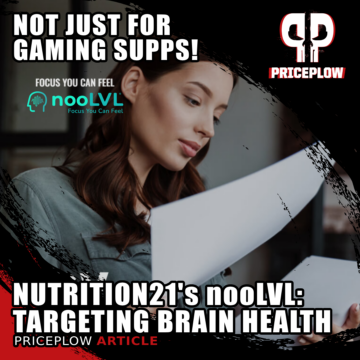
Nutriton21 recently published a press release titled "Nutrition21 Expands Its nooLVL Functional Ingredient Into the Brain Health Space With Unique Scientifically Substantiated Cognitive Claims", announcing the plan to bring nooLVL to more audiences thanks to the research that's already been performed.
It is recommended to start with a ½ scoop serving to assess tolerance and work your way up to a full scoop for the full-throttle experience.
Then, for optimal results, mix one scoop of Phasic with water and consume 15-30 minutes before exercise. Whether you're new to pre-workouts or a seasoned veteran, Phasic is formulated to scale with your intensity.
Conclusion
It's clear a lot of thought has gone into the nootropic effects of Live Evolved's Phasic High Stim Preworkout. The powerhouse combination of Nutrition21's nooLVL, citrulline, and more make this an enticing supplement for anyone looking to gain the edge needed to excel in today's demanding fitness landscape and elevate their workout routine.
See the widget below to find where you can get Phasic and feel the nooLVL-driven focus for yourself!
Live Evolved Phasic – Deals and Price Drop Alerts
Get Price Alerts
No spam, no scams.
Disclosure: PricePlow relies on pricing from stores with which we have a business relationship. We work hard to keep pricing current, but you may find a better offer.
Posts are sponsored in part by the retailers and/or brands listed on this page.


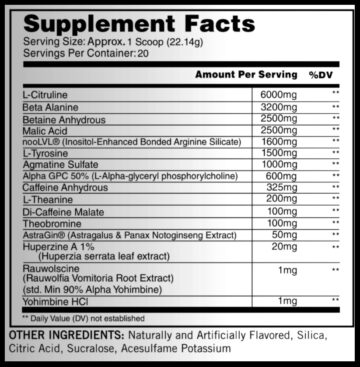
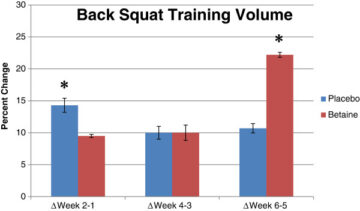



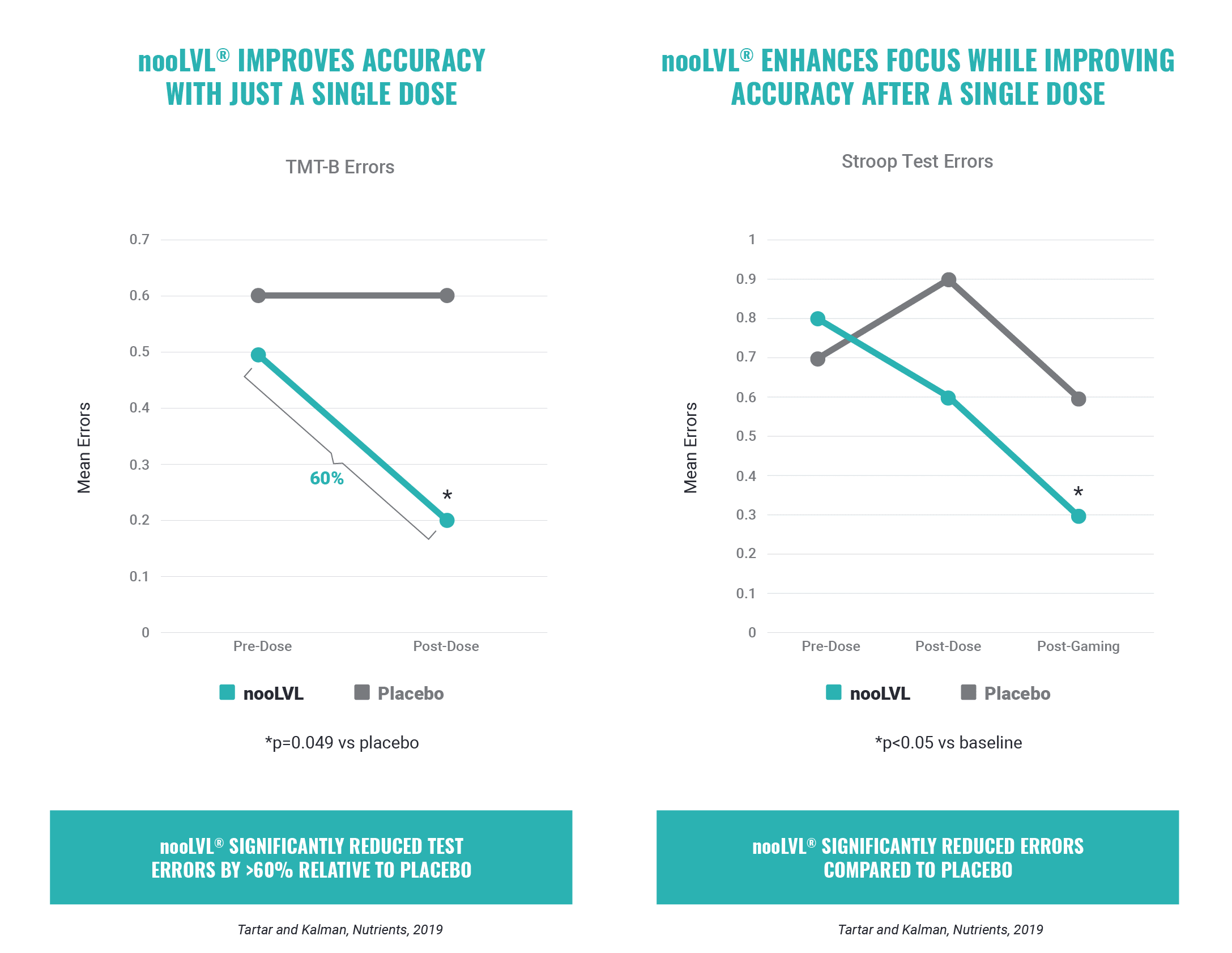
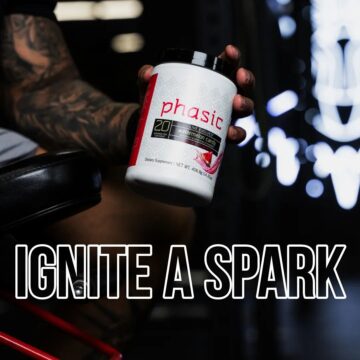
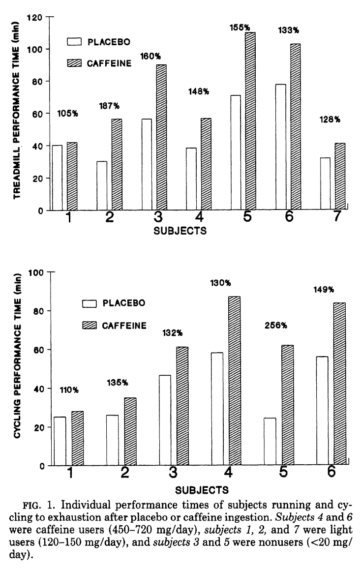


Comments and Discussion (Powered by the PricePlow Forum)